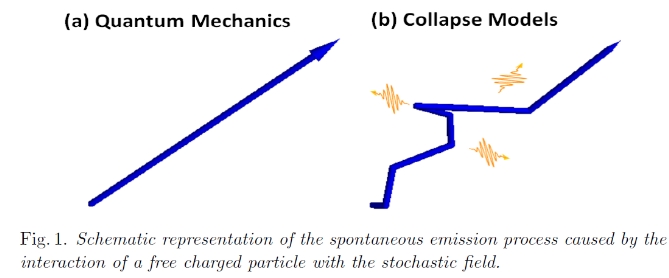Experimental tests of dynamical wave function collapse
Why the quantum properties of microscopic systems, most notably, the possibility of being in the superposition of different states at once, do not seem to carry over to larger objects? Even perfectly isolating a quantum system, regardless its size, will the linear and deterministic shroedinger evolution manifest forever? Such queries triggered a debate which is as old as the quantum theory itself,and have implications in several branches of knowledge, which range from philosophy to quantum technologies, to structural physical theories of consciousness.
Since several decades huge theoretical effort was devoted to the development of generalizations of quantum theory, the so called dynamical models of wave function collapse, whose common ansatz is that the superposition principle may progressively break down when atoms glue together to form larger systems.
But what triggers the collapse?
Our team has great experience and detains world records in measurements of spontaneous radiation predicted by various collapse models proposed to solve the “measurement problem”. Our investigation of the dynamical reduction models was initially regarding the Quantum Mechanics with Spontaneous Localization (QMSL) and the Continuous Spontaneous Localization (CSL). QMSL was developed by Ghirardi, Rimini and Weber [1], according to the model particles undergo a spontaneous localization around definite positions, following a Poisson distribution characterized by a mean frequency parameter (collapse rate). Such model was further developed in the CSL model, by Ghirardi, Rimini and Pearle [2] and [3], CSL is based on the introduction of new, non-linear and stochastic terms in the Schrödinger equation which induce, for the state vector, a diffusion process, which is responsible for the wave packet reduction (for reviews and references see also [4]). The diffusion motion of charged particles is responsible for the, faint, emission of radiation known as spontaneous radiation, which represents the observables of our measurements. We set the strongest limits on the l-parameter value [5,6] in a broad range of the parameter space.

In recent years we extended our experimental studies also towards the collapse models developed by Diósi and Penrose.
when a system is in a spatial quantum superposition, a corresponding superposition of two different space-times is generated. The superposition is unstable and decays in time. The more massive the system in the superposition, the larger the difference in the two space-times and the faster the wave-function collapse. We performed a dedicated measurement with an experimental setup based on a High Purity Germanium detector and operated at the Gran Sasso underground laboratory [7]. We set a record and discard the simplest version of these models, the obtained limit on the characteristic parameter of the model is shown in Fig. 3.


References
- [1]. C Ghirardi, A. Rimini and T. Weber, Phys. Rev. D 34, 470 (1986); ibid. 36, 3287 (1987) Found. Phys. 18, 1 (1988)
- [2]. Pearle, Phys. Rev. A39, 2277 (1989)
- [3]. C. Ghirardi, P. Pearle, and A. Rimini, Phys. Rev. A 42, 78 (1990)
- [4]. For reviews and references, see A. Bassi and G. C. Ghirardi 2003 Dynamical reduction models Phys. Rep. 379 257; P. Pearle 1999 Collapse models Open Systems and Measurements in Relativistic Quantum Field Theory (Lecture Notes in Physics vol 526) ed H-P. Breuer and F. Petruccione (Berlin: Springer). See also Ref [6] of A. Bassi, I. Ippoliti and S. L. Adler 2005 Phys. Rev. Lett. 94 030401, and S. L. Adler 2004 Quantum Theory as an Emergent Phenomenon (Cambridge: Cambridge University Press) ch 6. Alternative choices of the correlation function are discussed in T. Weber (1990) Nuovo Cimento B 106 1111; more recently: Donadi, S.; Bassi, A.; Deckert, D.-A. On the spontaneous emission of electromagnetic radiation in the CSL model. Ann. Phys. 2014, 340, 70
- [5]. K. Piscicchia et al., Entropy 19(7), 319 (2017)
- [6]. C. Curceanu et al, International Journal of Quantum Information Vol. 17, No. 8, 1941011 (2019)
- [7]. Donadi, S., Piscicchia, K., Curceanu, C. et al.Underground test of gravity-related wave function collapse. Nature Physics volume 17, 74, (2021)
